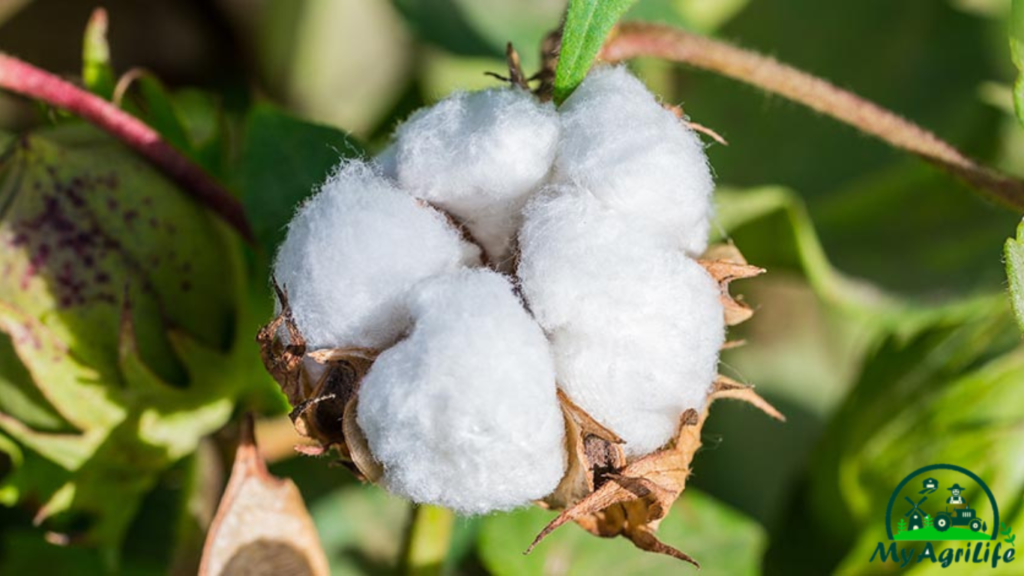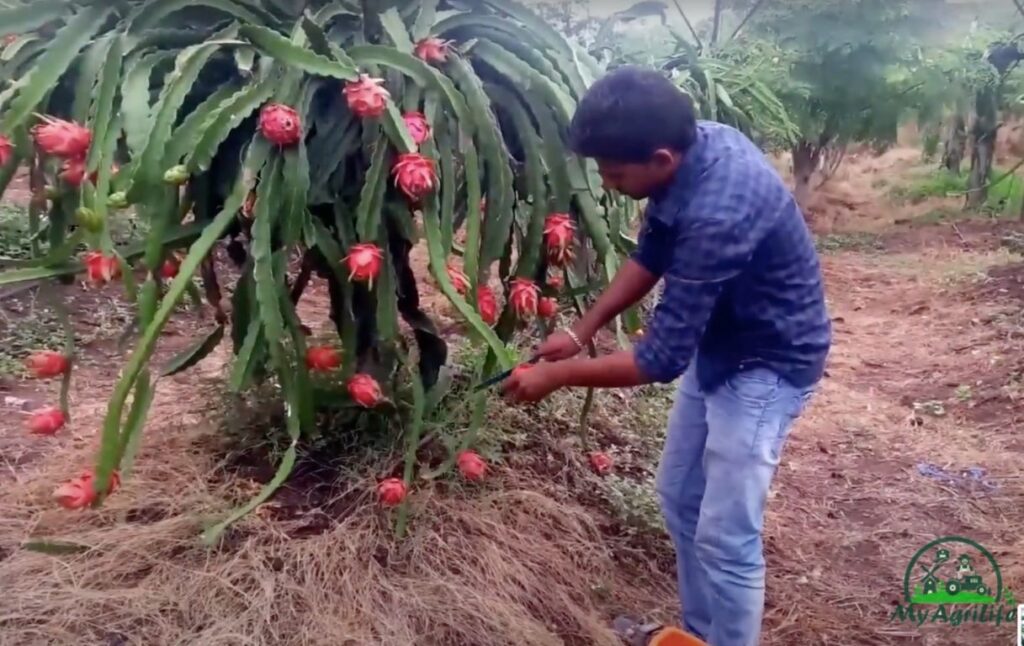
Linseed, also known as flaxseed, is a small, brown or golden-colored seed that comes from the flax plant. It is a popular ingredient in many cuisines around the world and is often used as a source of fiber, omega-3 fatty acids, and other nutrients.
Linseed can be eaten raw or cooked and can be used in a variety of dishes, including bread, cereal, yogurt, and smoothies. It is also commonly used as an ingredient in baked goods, such as muffins and cookies.
In addition to its culinary uses, linseed has also been used for medicinal purposes for centuries. It is believed to have anti-inflammatory properties and may help lower cholesterol levels and reduce the risk of certain types of cancer.
However, it is important to note that linseed contains a substance called cyanogenic glycoside, which can be toxic in large amounts. It is recommended that people consume no more than two tablespoons of ground linseed per day and avoid consuming raw or unripe linseed.
Seed Specification Linseed
Linseed, also known as flaxseed, has certain specifications that can vary depending on the type and the intended use. Here are some common specifications for linseed:
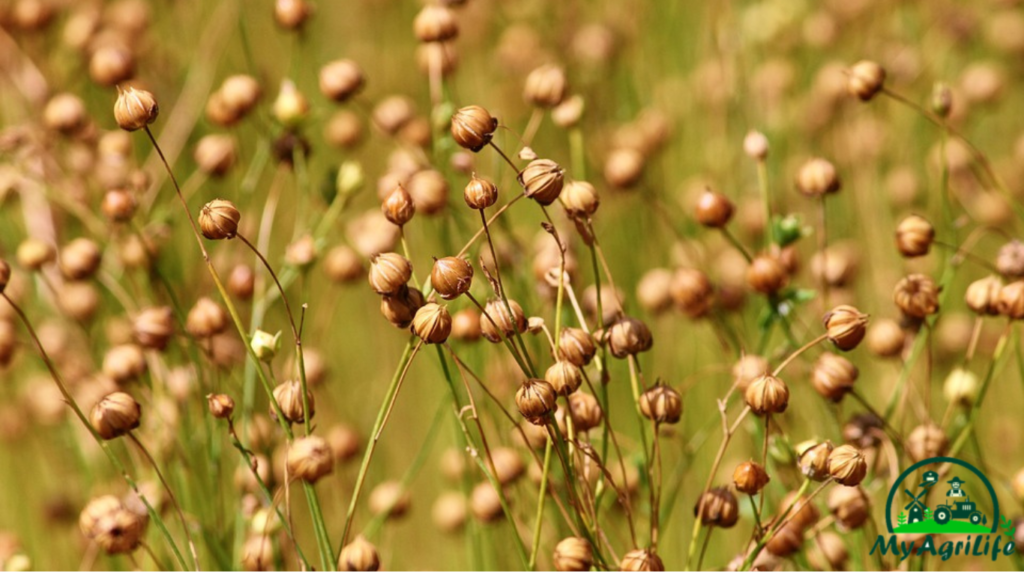
1.Color: Linseed can range in color from light to dark brown or golden yellow.
2.Moisture: The maximum allowable moisture content in linseed is typically around 9%.
3.Oil content: Linseed is known for its high oil content, which can range from 35% to 45% depending on the variety.
4.Protein content: Linseed is also a good source of protein, with a typical protein content of around 20%.
5.Foreign matter: The maximum allowable amount of foreign matter in linseed is usually around 2%.
6.Purity: Linseed should be free of any other seeds or plant matter that may be present.
7.Shelf life: Linseed should be stored in a cool, dry place and has a shelf life of around six months to a year.
It’s important to note that these specifications may vary depending on the intended use of the linseed, and some buyers may have additional requirements. It’s always best to check with the supplier or manufacturer for specific details about the linseed you are purchasing.
Land Preparation & Soil Health Linseed
Land preparation and soil health are important factors to consider when growing linseed. Here are some tips for land preparation and maintaining soil health for linseed cultivation:
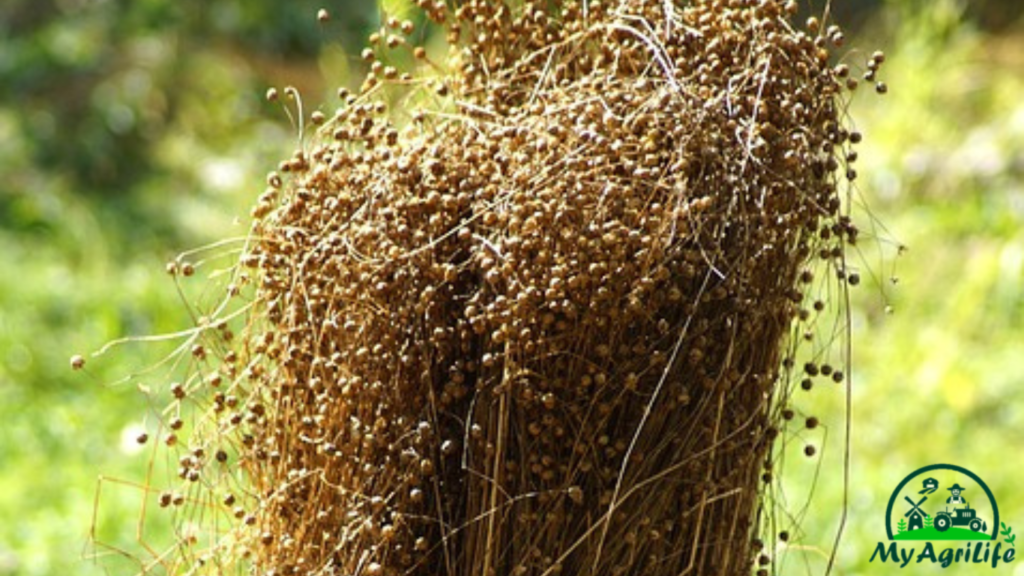
1.Soil type: Linseed prefers well-drained soils with a pH range of 6.0 to 7.5. The soil should be deep and fertile with a good organic matter content.
2.Land preparation: The land should be prepared by plowing and harrowing to a depth of at least 15 cm to break up any compacted soil and create a good seedbed. If needed, lime or other soil amendments may be added to adjust the pH and improve soil fertility.
3.Seedbed preparation: The seedbed should be firm and level to ensure good seed-to-soil contact. Rolling or pressing the soil can help create a firm seedbed.
4.Weed management: Weed control is important to prevent competition for nutrients, water, and light. Mechanical weeding or the use of herbicides may be necessary to control weeds.
5.Crop rotation: Linseed should be rotated with other crops to prevent the buildup of soil-borne diseases and pests. A three to four-year crop rotation is recommended.
6.Fertilization: Linseed responds well to nitrogen fertilization, with the majority of the nitrogen applied at planting time. Phosphorus and potassium may also be applied as needed based on soil test results.
7.Soil health: Maintaining soil health is important for the long-term productivity of linseed crops. This can be achieved through practices such as cover cropping, crop rotation, and reducing soil disturbance.
By following these tips, farmers can ensure good soil health and optimal growing conditions for linseed, leading to healthy and productive crops.
Crop Spray & Fertilizer Specification Linseed
Crop spraying and fertilization are important aspects of linseed cultivation that can impact crop yield and quality. Here are some specifications for crop spray and fertilizer for linseed:
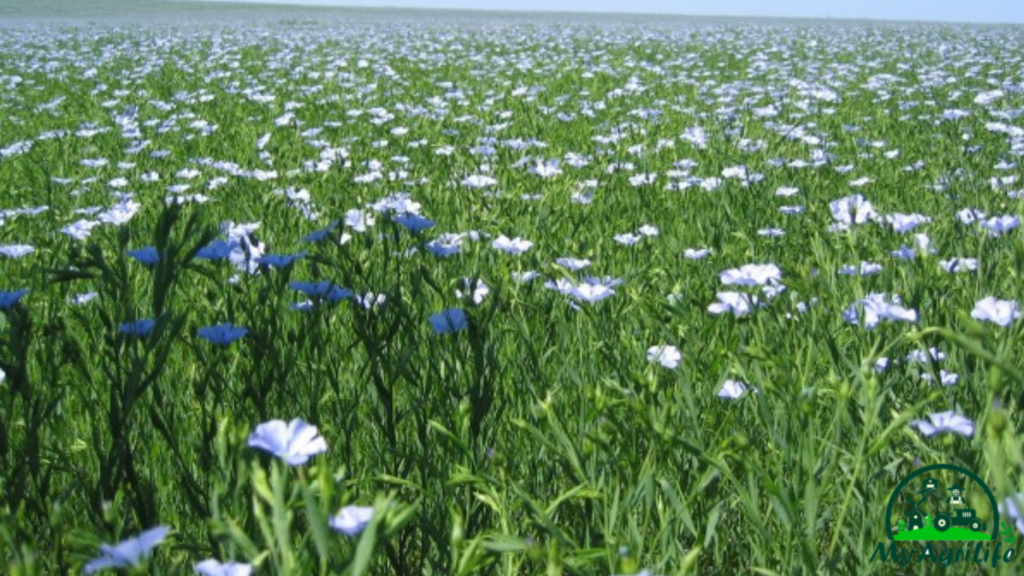
Crop Spray:
1.Timing: Linseed should be sprayed with herbicides soon after emergence to control weeds.
2.Herbicides: Pre-emergence herbicides such as flumioxazin, ethalfluralin, or pendimethalin can be used to control broadleaf and grass weeds.
3.Pesticides: Pesticides should be used only when necessary and according to the manufacturer’s recommendations. Insecticides such as pyrethroids or organophosphates may be used to control pests such as aphids, flea beetles, or cutworms.
Fertilizer:
1.Timing: Fertilizer should be applied at planting time to ensure optimal nutrient availability for the plants.
2.Nitrogen: Linseed requires a moderate amount of nitrogen, typically around 60-80 kg/ha, with the majority applied at planting time. However, excessive nitrogen can reduce oil content and increase susceptibility to disease.
3.Phosphorus and Potassium: These nutrients should be applied based on soil test results, with typical rates ranging from 30-40 kg/ha of P2O5 and 40-50 kg/ha of K2O.
4.Micronutrients: Linseed may require micronutrient fertilization in certain soil conditions. Zinc, boron, and manganese are some of the micronutrients that may be required in small quantities.
5.Organic fertilizers: Organic fertilizers such as compost, manure, or green manure crops can also be used to supplement soil nutrients and improve soil health.
It’s important to note that the specifications for crop spray and fertilizer can vary depending on the specific growing conditions and nutrient needs of the linseed crop. It’s always best to consult with a local agricultural extension service or a crop advisor for specific recommendations.
Weeding & Irrigation Linseed
Weeding and irrigation are important aspects of linseed cultivation that can impact crop yield and quality. Here are some specifications for weeding and irrigation for linseed:
Weeding:

1.Timing: Weeding should be done early in the crop cycle, as linseed is susceptible to competition from weeds.
2.Method: Mechanical or chemical weeding can be used to control weeds. Hand weeding is labor-intensive but may be necessary in some cases.
3.Frequency: Weeding should be done as necessary to keep the weeds under control. A weed-free period of 30-45 days after planting is recommended.
4.Weed height: Weeds should be removed when they are small, as they are easier to control and less competitive with the linseed plants.
Irrigation:
Water requirements: Linseed requires moderate water supply for optimal growth and yield. In general, 400-500 mm of rainfall or irrigation is sufficient for linseed production.
1.Irrigation timing: Irrigation should be done during the vegetative and reproductive growth stages to ensure optimal water availability for the plants. Early morning or late evening irrigation is preferred to minimize water loss due to evaporation.
2.Irrigation method: Sprinkler or drip irrigation can be used for linseed cultivation. Drip irrigation is more water-efficient and can provide better water control, but is more expensive to install.
3.Soil moisture: Soil moisture should be monitored regularly to ensure that the plants are not under-watered or over-watered. Over-watering can lead to waterlogging and root damage.
4.Drought tolerance: Linseed has some degree of drought tolerance, but prolonged periods of water stress can lead to reduced yield and poor quality of seeds.
It’s important to note that the specifications for weeding and irrigation can vary depending on the specific growing conditions and climate in the area. It’s always best to consult with a local agricultural extension service or a crop advisor for specific recommendations.
Harvesting & Storage Linseed
Harvesting and storage are important aspects of linseed cultivation that can impact the quality and market value of the crop. Here are some specifications for harvesting and storage of linseed:
Harvesting:
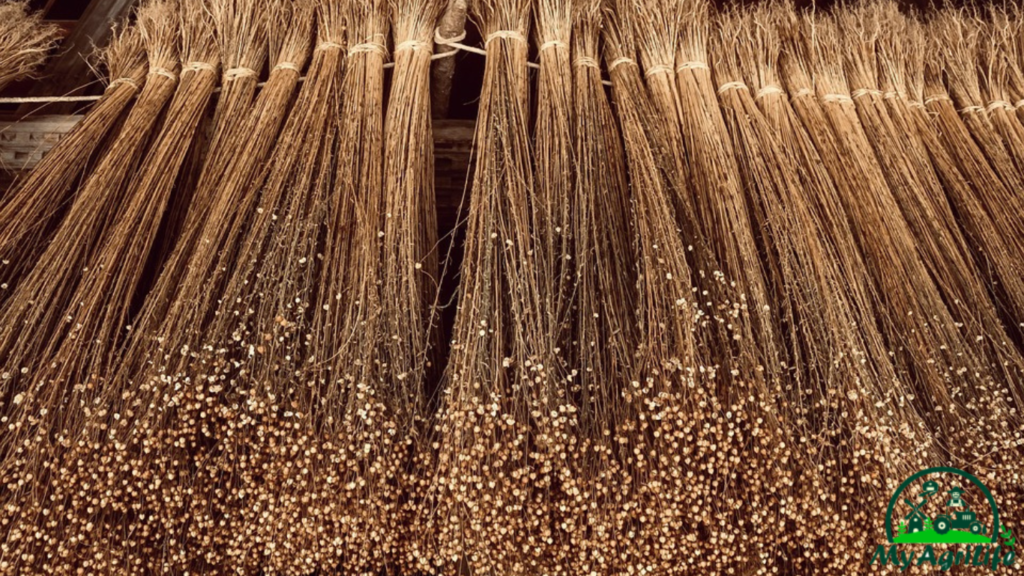
1.Timing: Linseed should be harvested when the seed capsules have turned brown and the plants have started to dry out. This usually occurs around 100-120 days after planting.
2.Harvest method: Linseed can be harvested using a combine or by hand. Combines are faster and more efficient for large-scale production, while hand harvesting may be necessary for smaller farms or fields with uneven terrain.
3.Threshing: After harvesting, the seed pods should be threshed to separate the seeds from the rest of the plant material. This can be done using a combine or a separate threshing machine.
Storage:
1.Drying: Linseed should be dried immediately after harvesting to reduce moisture content and prevent mold and bacteria growth. Drying can be done using natural air drying, mechanical drying, or a combination of both.
2.Moisture content: Linseed should be dried to a moisture content of around 8-10% before storage. High moisture content can lead to spoilage and reduced seed quality.
3.Storage conditions: Linseed should be stored in a cool, dry, and well-ventilated area to prevent spoilage and insect infestations. Temperature should be maintained below 25°C to prevent rancidity and ensure optimal seed quality.
4.Container: Linseed can be stored in bags or containers made of breathable material such as jute or cotton. Plastic bags should be avoided as they can trap moisture and lead to spoilage.
It’s important to note that the specifications for harvesting and storage can vary depending on the specific growing conditions and climate in the area. It’s always best to consult with a local agricultural extension service or a crop advisor for specific recommendations.
Conclusion
Linseed farming can be a profitable and rewarding venture, especially when proper management practices are implemented. Successful linseed cultivation requires careful attention to soil preparation, planting, fertilization, weed and pest management, irrigation, and harvesting and storage.
Choosing the right variety of linseed for the specific growing conditions and intended use of the crop is also important. Fiber-type linseed and oil-type linseed have different characteristics and are suited to different uses, so it’s important to choose the right type for the intended purpose.
Proper management practices can help to ensure a healthy and productive linseed crop. This includes regular monitoring and management of pests and diseases, as well as careful attention to soil health and moisture levels. By following best practices and investing in quality equipment and inputs, farmers can increase their chances of success and profitability with linseed farming.








